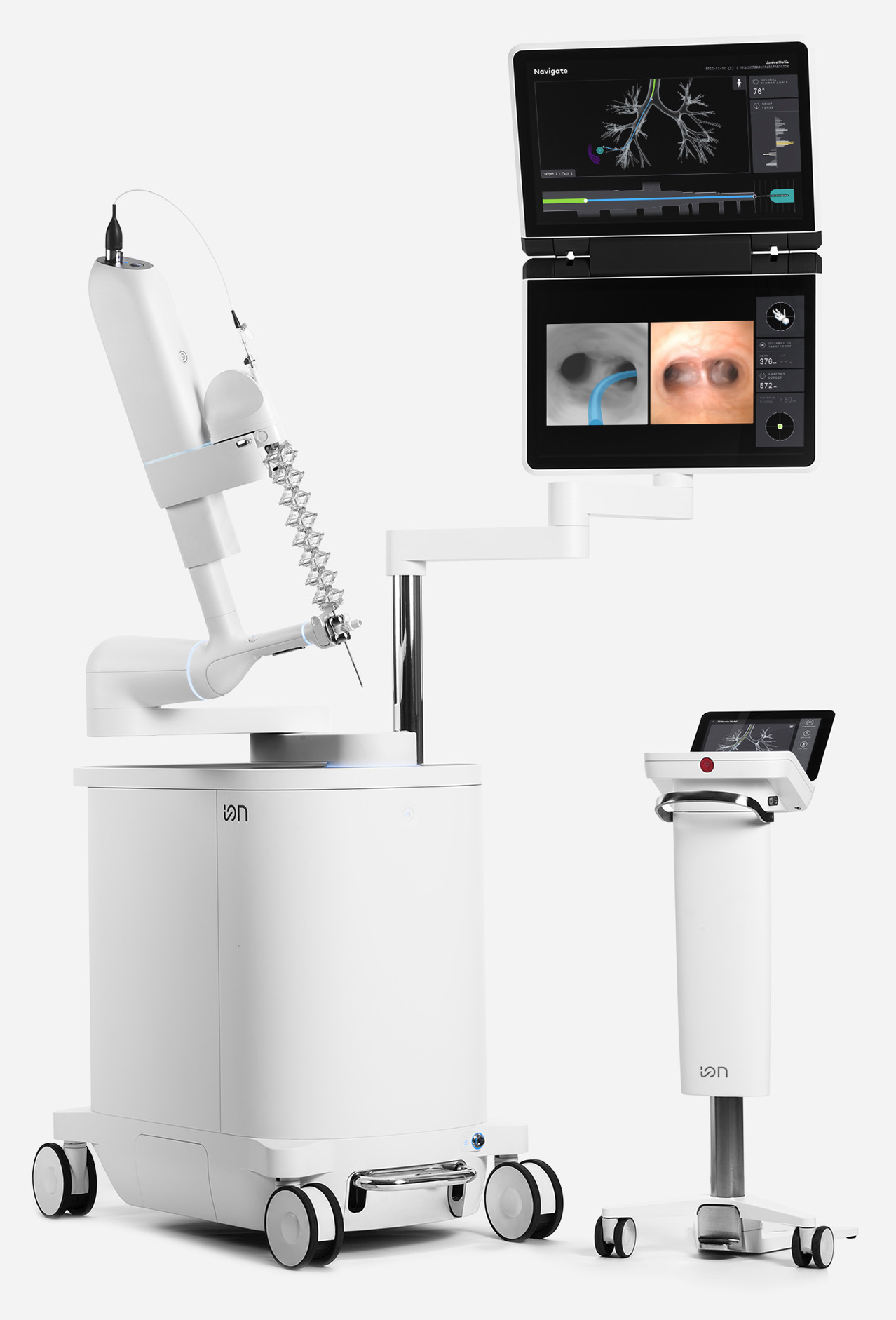Visit Vale Health Marketplace?
You are leaving balladhealth.org to visit Vale Health’s Wellness Marketplace.
Disclaimer: Ballad Health does not sponsor, endorse or recommend any product or resource listed in the marketplace.
If you’ve had a CT scan and need a biopsy for lung cancer screening, your doctor may recommend the Ion by Intuitive robotic-assisted surgery at a Ballad Health facility. This technology makes it possible for surgeons to reach parts of the peripheral lung where more than 70% of cancerous growths may be located.
Ballad Health has invested in the Appalachian Highlands by offering the latest, state-of-the-art robotics technology. We’re the only provider in this service area offering this form of biopsy.

The Ion system helps clinicians better diagnose lung cancer in patients. Here are some of the benefits of this robotic-assisted biopsy:

After you’ve had a CT scan, Ion’s software helps surgeons plan the procedure using a 3D generated rendering of your lungs’ airway trees by automatically generating a pathway.
During the procedure, the ultrathin robotic catheter is navigated by a surgeon using a controller. This advanced catheter utilizes a fiber-optic shape sensor that allows it to provide real-time images of all 18 segments in your lungs to the surgeon.
Once the surgeon has found the pulmonary nodule they’ve selected for biopsy, the catheter is locked in place and Ion’s Flexision Needle passes through the catheter and collects the biopsy.
One of the primary advantages of robotic-assisted biopsy is that there are no incisions made into the chest wall. All the samples are taken from inside the lungs via the Ion catheter.
Additionally, thanks to the advanced 3D mapping software, deeper, harder-to-reach sections of your lungs can be sampled in a minimally invasive way.